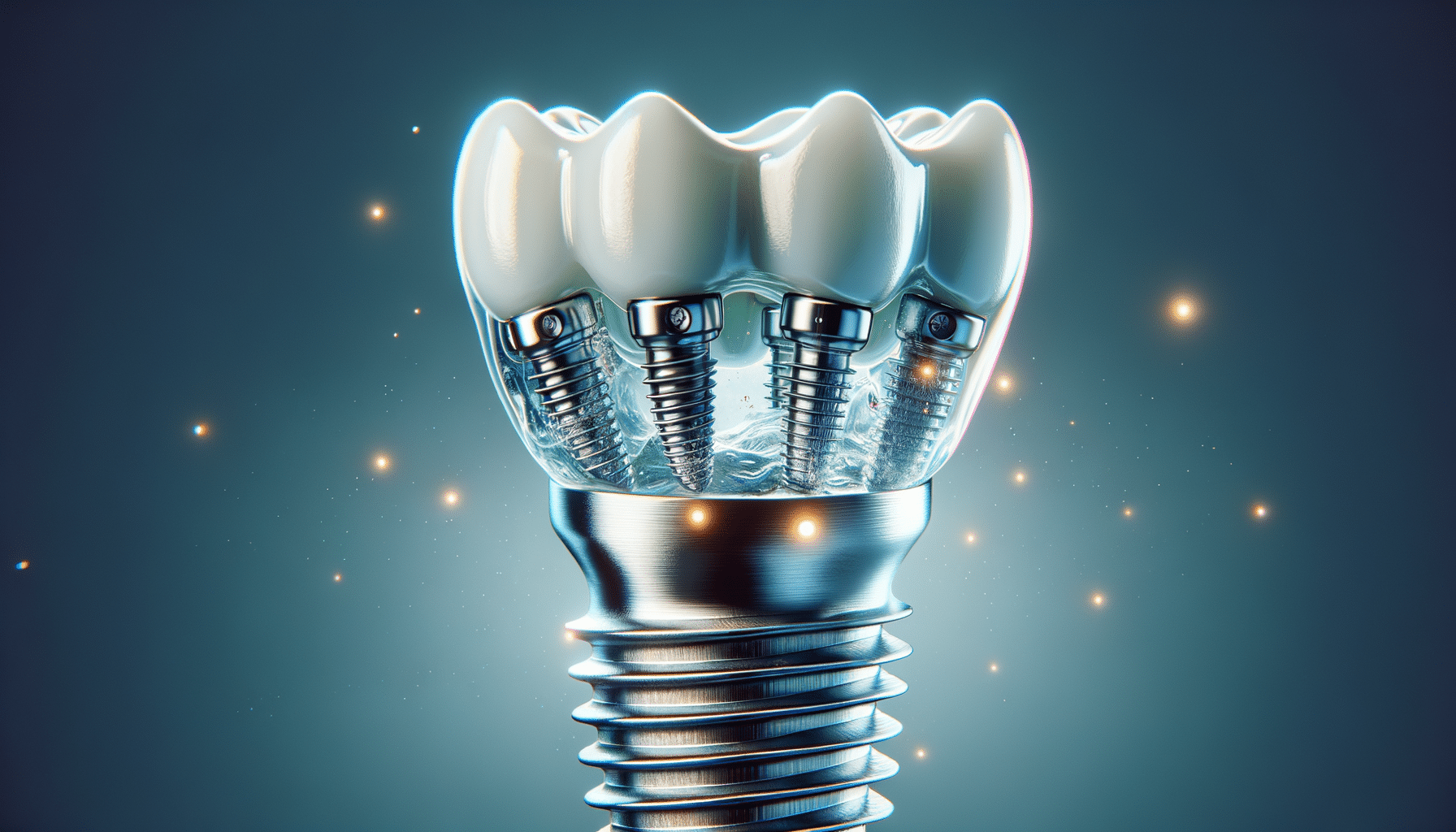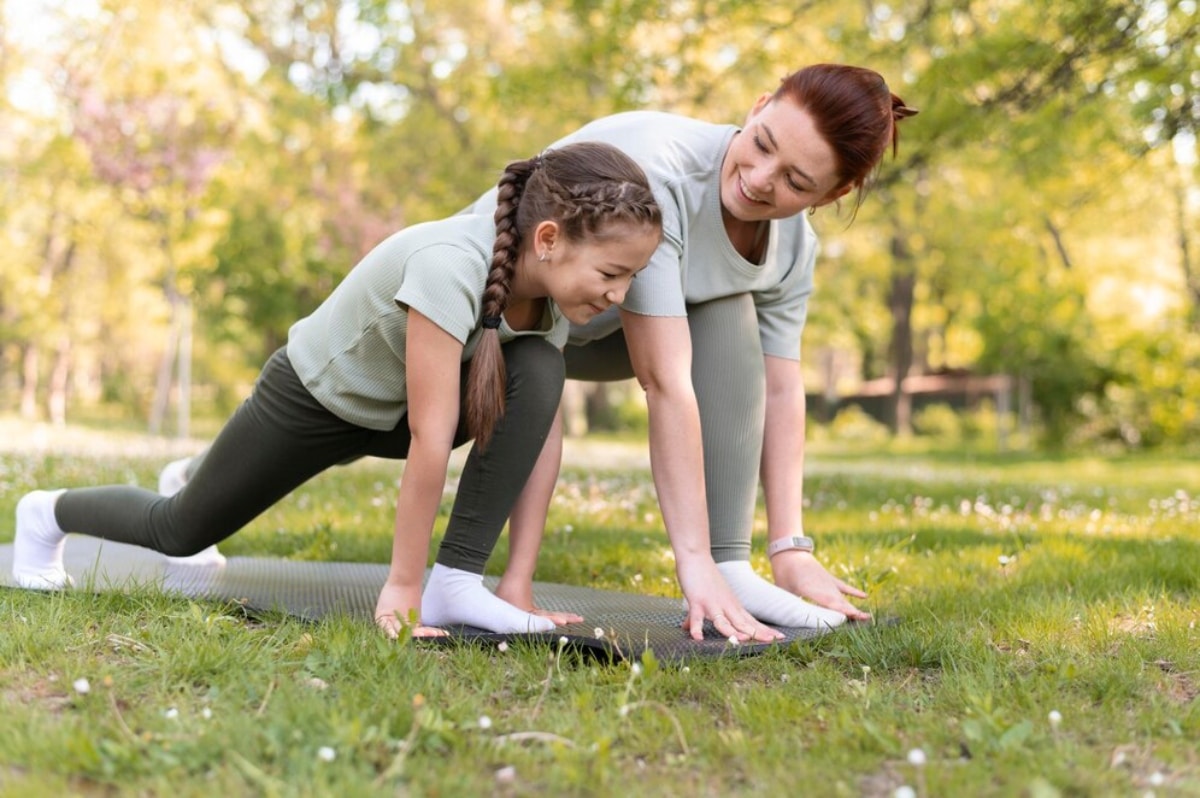
Importance of Exercise During Puberty
More Than Just Growing Tall
Puberty is one of the most intense growth phases in a person’s life. Teens and tweens go through many changes. Hormone surges, mood swings, and sudden growth can make them feel unfamiliar in their own bodies. But amidst the chaos of transformation, there’s one constant that can ground, strengthen, and empower them movement.
Exercise during puberty isn’t about performance, physique, or fitting into a trend. It’s about connection to self, to strength, and to the emotional resilience they’ll need as they navigate new terrain.
In this blog, we’ll look at the benefits of fitness for teens. We’ll share tips on encouraging a healthy relationship with movement. Also, we’ll offer practical workout advice for puberty that supports development without pressure. Whether your child is sporty or sedentary, confident or uncertain, you’ll find guidance here to help them grow — from the inside out.
Why Exercise Is Crucial During Puberty
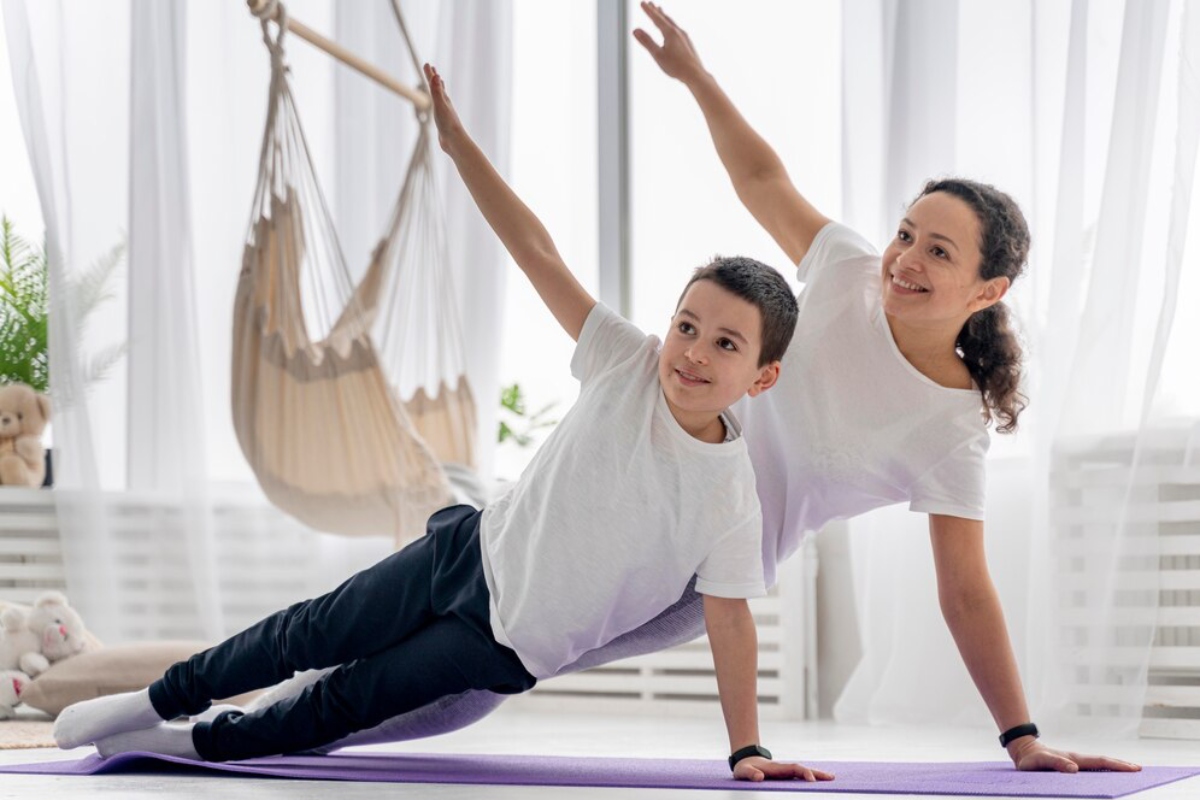
Supporting Physical Growth and Strength
Between the ages of 10 and 18, teens experience dramatic physical changes:
- Growth spurts in height and weight
- Increases in muscle mass and bone density
- Hormonal changes that affect coordination and energy levels
Regular exercise helps:
- Strengthen bones during peak bone-building years
- Improve posture and muscle alignment
- Support cardiovascular health
- Enhance flexibility and balance as bodies lengthen and shifts
It also builds neuromuscular connections, helping teens adjust to their changing limbs and frame.
Boosting Emotional and Mental Well-being
Puberty can stir a whirlwind of emotional shifts — anxiety, self-doubt, irritability. Exercise offers a natural mood stabiliser.
Movement boosts endorphins, lowers cortisol (the stress hormone), and raises serotonin and dopamine.
- Alleviate mild depression or anxiety
- Improve sleep
- Boost concentration and academic focus
- Support self-regulation and body confidence
Exercise also provides a healthy outlet for intense emotions and breaks from screens and social pressures.
Building Healthy Habits for Life
The habits formed during adolescence often track into adulthood.
- Enjoyable
- Energising
- Empowering (not punishing)
They’re more likely to continue exercising for the right reasons. Building a positive link with fitness in puberty sets the stage for lasting physical and mental health.
Puberty Exercise Benefits: The Full Spectrum
Here’s a closer look at the holistic benefits of exercise for teens and tweens.
1. Supports Healthy Weight Management
As hormone levels shift, body composition changes — sometimes rapidly. Regular physical activity helps teens.
- Maintain a healthy weight without fixating on appearance
- Feel stronger in their bodies
- Reduce the risk of adolescent obesity
It shifts the focus of fitness from burning calories to function, energy, and well-being.
2. Enhances Coordination and Motor Skills
During growth spurts, teens can feel clumsy or uncoordinated — they’re literally learning to use a new body.
Exercise (especially those involving skill and rhythm) helps:
- Improve hand-eye coordination
- Strengthen proprioception (body awareness)
- Boost self-trust and physical confidence
Think: dance, martial arts, climbing, or ball sports.
3. Reduces Risk of Chronic Illness Later in Life
According to the NHS and British Heart Foundation, regular exercise during adolescence lowers the risk of:
- Heart disease
- Type 2 diabetes
- Osteoporosis
- Certain types of cancer
It also supports immune health, reducing common teen ailments like fatigue, low mood, and frequent colds.
4. Supports Healthy Menstrual Cycles
For girls, regular movement:
- Helps regulate periods
- Eases cramps and PMS symptoms
- Supports hormonal balance
- Reduces bloating and sluggishness
Low-impact movement like swimming, yoga, or walking can be particularly effective during menstruation.
Fitness for Teens: What Kind of Exercise Works Best?
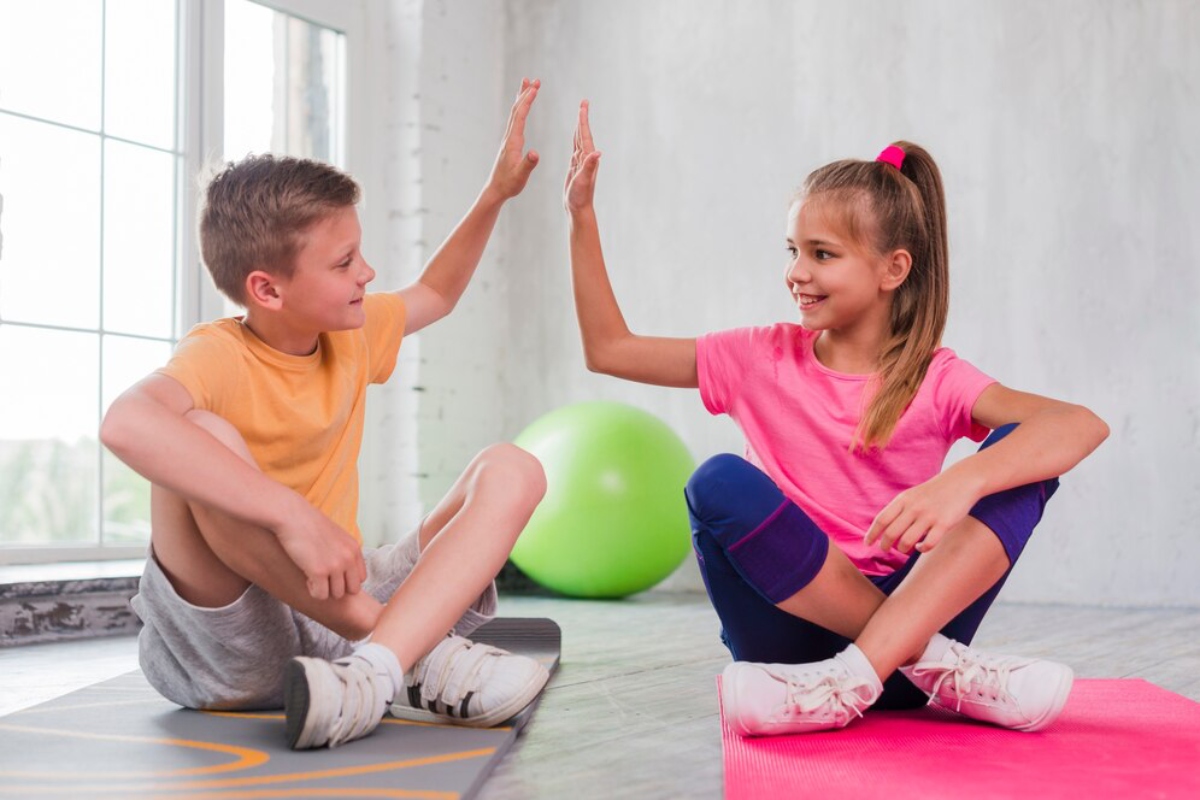
The best exercise during puberty is the one your child enjoys. Whether it’s structured or free-form, intense or gentle, the goal is movement variety and consistency.
Cardiovascular Exercise
Boosts heart and lung health, supports stamina, and helps regulate mood.
Options include:
- Swimming
- Running or jogging
- Dancing
- Cycling
- Skating or scootering
Strength Training
Supports muscular development, improves posture, and builds confidence.
Safe strength work includes:
- Bodyweight exercises (push-ups, squats, planks)
- Resistance bands
- Light weights (with supervision)
- Gym machines (for older teens, with guidance)
Strength training does not stunt growth. When done correctly, it supports healthy bone and muscle development.
Flexibility and Mobility
Helps ease growing pains and supports better posture, especially during growth spurts
Include:
- Yoga or Pilates
- Stretching routines post-exercise
- Dynamic warm-ups before sports
Mind-Body or Skill-Based Activities
Improves focus, balance, and emotional regulation.
Great choices:
- Martial arts
- Dance
- Gymnastics
- Rock climbing
- Tai Chi
How Much Exercise Do Teens Need?
According to NHS guidelines, young people aged 5 to 18 should aim for:
- At least 60 minutes of moderate-to-vigorous activity every day
- Strength-based activities at least 3 times per week
But flexibility is key. That hour doesn’t have to happen all at once — 15-minute movement bursts throughout the day still count.
Making Movement Positive, Not Punitive
Avoid Tying Exercise to Weight or Looks
Comments like:
- “You need to lose weight.”
- “Let’s burn off that dessert.”
- “You need to bulk up.”
Can damage a child’s relationship with movement. Instead, frame fitness as:
- Energy for fun and learning
- Strength to do what they love
- A mood-lifter and body-celebrator
Encourage, Don’t Force
If your child is resistant:
- Try new activities together (walks, family yoga, dance-offs)
- Let them explore different sports or clubs
- Give them choice and autonomy — it’s their body, after all
Praise Effort, Not Outcome
Instead of focusing on achievement (“You scored a goal!”), celebrate:
- Consistency
- Commitment
- Team spirit
- Joy
This builds intrinsic motivation.
Puberty Workout Tips: Practical Advice
1. Keep It Fun
Use music, games, or challenges. Movement doesn’t have to feel like a “workout” — skateboarding, hula-hooping, playing Frisbee all count.
2. Focus on Function
Talk about how movement:
- Helps carry a heavy school bag more easily
- Builds stamina for long days
- Makes climbing stairs or chasing the dog feel easier
Linking exercise to real-life benefits helps it feel relevant.
3. Be a Role Model
Let your child see you:
- Moving regularly (for joy, not punishment)
- Talking positively about your body
- Taking breaks to stretch or walk
Your relationship with fitness sets the tone.
4. Make Movement Social
Let exercise be a time for connection, not isolation. Try:
- Weekend bike rides
- After-dinner walks
- Group dance classes
- Sports with friends
5. Support Post-Exercise Recovery
Puberty bodies need extra fuel and rest. Ensure your teen:
- Stays hydrated
- Eats a post-exercise snack (carb + protein)
- Gets enough sleep (9–10 hours per night for most teens)
When to Be Cautious or Seek Support
Movement should make your child feel better, not worse.
- Overexercising or rigid routines
- Refusing to rest when injured or exhausted
- Exercising secretly or excessively
- Linking self-worth only to performance
These may indicate deeper issues like disordered eating or body dysmorphia. If concerned, speak to your GP, a school counsellor, or a registered therapist.
Conclusion: Helping Teens Grow Strong in More Ways Than One
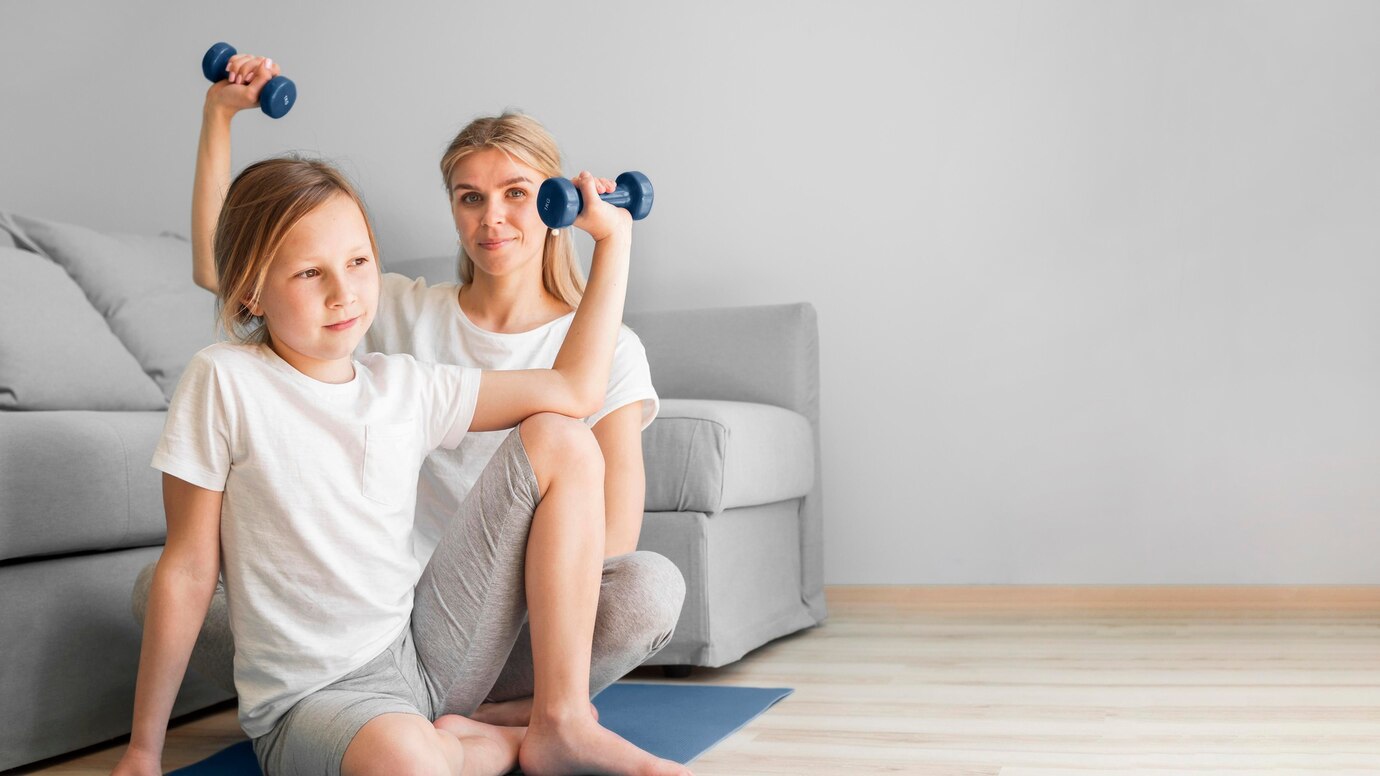
Exercise during puberty goes beyond abs or agility. It helps your child trust their body and feel grounded during this time of change. Plus, it builds lifelong habits for physical and emotional well-being.
Every bit of movement counts. Whether it’s five minutes of stretching or an hour-long football match, it boosts their sense of ability and joy. As a parent, you don’t have to push—just support, offer options, and show up as a partner in their wellness journey.
So here’s your first step: Ask your teen what kind of movement makes them feel good. Then, try it with them. You might just discover something that lifts both of your hearts.
What’s your teen’s favourite way to stay active? Share your story or tips in the comments below — your journey could inspire another parent to get moving too.

